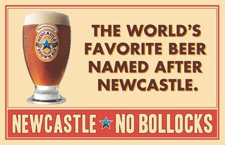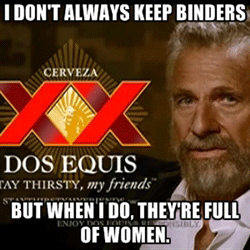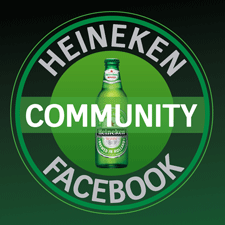Heineken USA’s CMO on Pulling Brands out of the Ditch with a Challenger Mentality
Heineken USA is marketing in an incredibly competitive environment overflowing with low–growth categories and competitors owning some of the largest ad spends out there. When Lesya Lysyj joined Heineken USA several years ago as its chief marketing officer, two forces were reshaping the beer category—consumer media consumption habits and the craft beer movement—that caused the company to remake the way it goes to market.
“If you look at the beer category, everything is the same,” Lysyj said at the ANA Brand Masters Conference last week. “The ads have a very similar formula. The category norm is very similar in outdoor and on TV. It’s 30 seconds with guys and bikini-clad girls, guys and dogs and guys and guys. We had to zig where the category was zagging. Our aspiration is to be the challenger of conventions.”
She shared how Heineken USA grew three of its brands by employing that “challenger mentality,” with the goal of being top of mind when consumers reach for a beer. Heineken, a premium brand, had only 4% share and had been declining for five years. New Castle’s on-premise and six-pack sales were dropping and even though Dos Equis had a long-term winning campaign, it came down to how to keep it fresh.
Newcastle Brown Ale
Newcastle Brown Ale, the smallest of the three brands was perfectly placed to be a challenger and set up to take some big risks. It’s a malt beverage being squeezed by craft beers.
For the last couple of years, the brand has been staging events in high traffic areas that were drawing plenty of media impressions. At one event, people could stand behind over-sized glasses of frothy Newcastle and have their photos taken looking as if they were submerged up to their necks in malt beer. In another—a human installation—a man appeared as if he pulling a keg of beer out of the middle of the exterior wall of a building. And a series of posters along a wall were plastered over a human so just his legs stuck out.
“We were having lots of fun and stepping a little bit out of beer category norms, but we needed to get deeper, to come up with a campaign to stand out,” she said. “We realized that Newcastle had something important going for it. It’s from Newcastle. This is something we needed to nurture and work with.”
 So Newcastle went back to its roots, playing on the characteristics of Newcastle the salt of the earth, working man’s beer from the North East of England. In 2011, it released a campaign with the positioning: “Newcastle is Refreshingly Honest,” in a strained world, with the British slogan, “No Bullocks,” which in essence means, “No Bull.” This year, the 2013 version of campaign promotes the new 14.9-ounce can.
So Newcastle went back to its roots, playing on the characteristics of Newcastle the salt of the earth, working man’s beer from the North East of England. In 2011, it released a campaign with the positioning: “Newcastle is Refreshingly Honest,” in a strained world, with the British slogan, “No Bullocks,” which in essence means, “No Bull.” This year, the 2013 version of campaign promotes the new 14.9-ounce can.
On premise, there was plenty of ingenuity, like coasters that read, “If this coaster doesn’t make you want a Newcastle then the coaster sales guy lied to us.” The “Geordie Army,” an 11-person brand team, hit core markets and Newcastle launched its very first TV spot. Social media was ramped up with video and other content that began racking up likes, 18,000 then 21,000. One snippet of content on Facebook read: “For every person liking this Facebook page, someone will get nothing.” Newcastle found it was on to something and began adding more content, finding success in the model of funny, lightweight, bite-size snippets of content.
“It’s very easy for a consumer to come in and take a bite,” Lysyj said. “Social got by far the most engagement. If we posted something and got 20,000 likes and something else got 2,000, we tightened our position.”
Soon after, when Lysyj met with Facebook to learn about how it was doing, Facebook told her that its average engagement is 1.5%, for Newcastle is was 25%.
For all its efforts, New Castle on-premise sales stopped declining and its six-pack sales started growing after six years of decline and is now Heineken USA’s fastest growing brand among younger consumers.
“For a small brand, it’s getting more attention than it deserves and that’s really important for us,” she said.
Dos Equis
When Lysyj took the job two years ago, she walked into the highly successful, well recognized campaign “The Most Interesting Man,” which just kept on giving. The concept of a gray bearded spokesperson, actor Jonathan Goldsmith, roughly in his 70s, was introduced in 2006 at a distributor conference of 1,500 to “dead silence,” Lysyj said.
“It was a great opportunity to create a story that is really different,” she said. “That’s what we did with Dos Equis.”
 The campaign, which has won multiple awards, helps grow the brew over 20% every year and is set up to do the same this year. But how to keep it fresh without making any missteps? A new spot launched a few weeks as did a social media challenge for the brands 2.4 million Facebook fans to write their own legend lines, challenging those of its famous spokesperson whose most notable line us, “”I don’t always drink beer, but when I do, I prefer Dos Equis.” and “Stay Thirsty My Friends.”
The campaign, which has won multiple awards, helps grow the brew over 20% every year and is set up to do the same this year. But how to keep it fresh without making any missteps? A new spot launched a few weeks as did a social media challenge for the brands 2.4 million Facebook fans to write their own legend lines, challenging those of its famous spokesperson whose most notable line us, “”I don’t always drink beer, but when I do, I prefer Dos Equis.” and “Stay Thirsty My Friends.”
“We’re trying to keep the campaign fresh and each week hundreds of consumers try out their own lines on the Dos Equis Facebook page,” Lysyj said. “We have so much engagement, we’re trying to figure out how to push that back out.”
Heineken
As for the upscale pale lager Heineken, the challenge was how to take on competitors with an already established iconic brand. Heineken, first brewed in 1873, is family owned and available in more than 150 countries.
The challenger communication strategy steered clear of anything remotely similar to what was in market. A series of TV spots were produced as mini-movies that were complicated and confusing by design. A a 90-second spot debuted first over a few weeks, followed by a 60-seond spot then 30, all in an effort to drive consumers online.
 Heineken puts 6.5% of its budget toward digital, “a lot more than its competitors,” Lysyj said. It has 12.7 million global Facebook fans and at one point ranked No. 1 in Twitter share in the U.S. and No. 1 among Facebook fans. It employs the same bite-size, lightweight content strategy that it uses for Newcastle for Heineken’s social media strategy. After five years of decline, the brand began to grow again in 2012, she said. This year, James Bond is about to become the new face of Heineken and will drink the brew in an upcoming movie.
Heineken puts 6.5% of its budget toward digital, “a lot more than its competitors,” Lysyj said. It has 12.7 million global Facebook fans and at one point ranked No. 1 in Twitter share in the U.S. and No. 1 among Facebook fans. It employs the same bite-size, lightweight content strategy that it uses for Newcastle for Heineken’s social media strategy. After five years of decline, the brand began to grow again in 2012, she said. This year, James Bond is about to become the new face of Heineken and will drink the brew in an upcoming movie.
“We still have a lot of work to do and we’re having a lot of fun,” she said.
Four Takeaways: that Heineken USA, Chief Marketing Officer, Lesya Lysyj, learned over the last few years.
- Regardless of your brand’s size, competitive set or history, you can be a challenger. It’s not only reserved for those small brands you can take a risk on.
- Once you create a challenger culture, lean out and share yourself, you’ll be surprised where your support comes from. “No Bullocks” got lots of support from the distributor network and senior management. “ It’s a good example of behavior they would like to see more of,” Lysyj said.
- Adjust. Adjust. Adjust. Look at all the indicators and decide what to dial up and what to dial down. Just put it out there and hope for the best, you can always fine-tune it.
- Follow your instincts Intuition is about the subconscious taking in information that goes down to you gut. You don’t really know why. “I’m getting more senior in my career and I can trust my instincts and those of others in the organization, like the sales people,” she said. “Trust the people around you their intuition is probably a good thing to follow.”




























